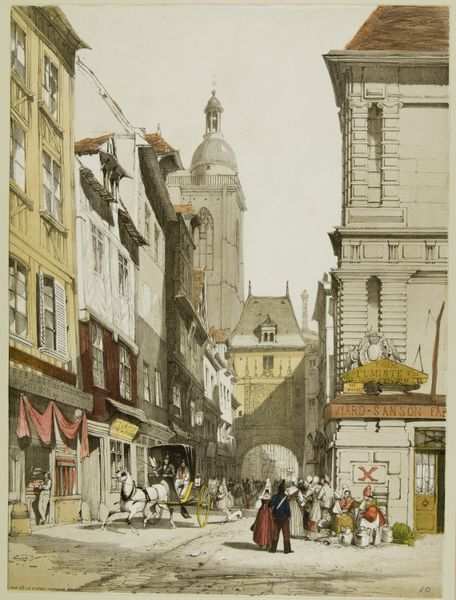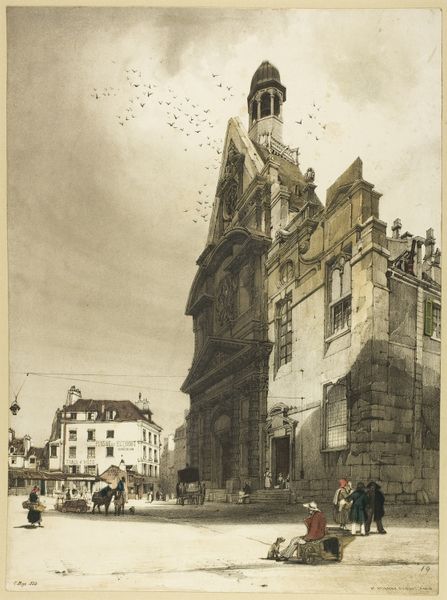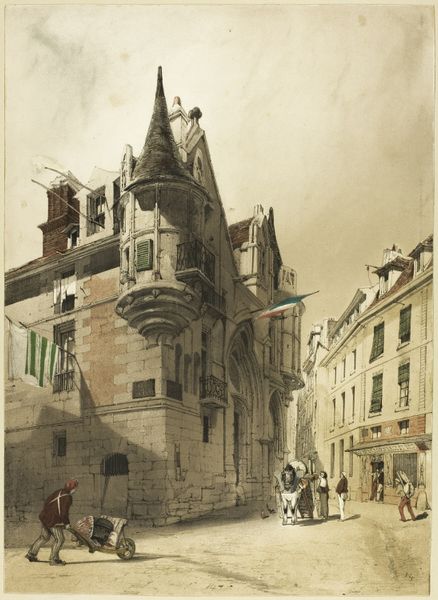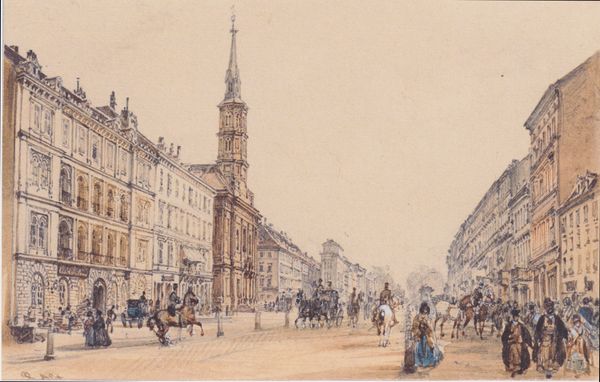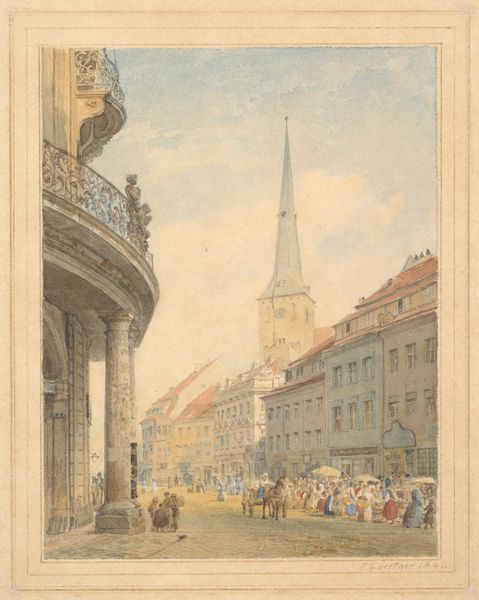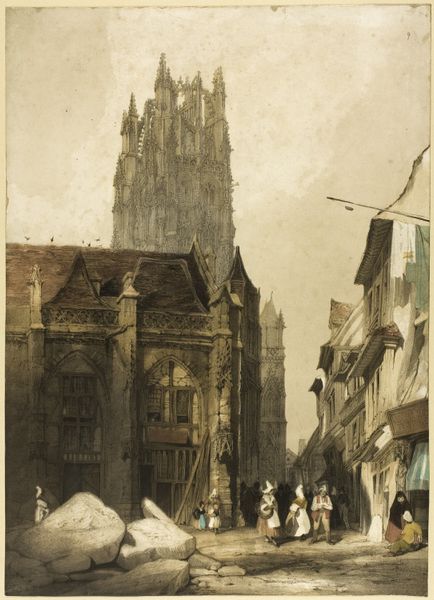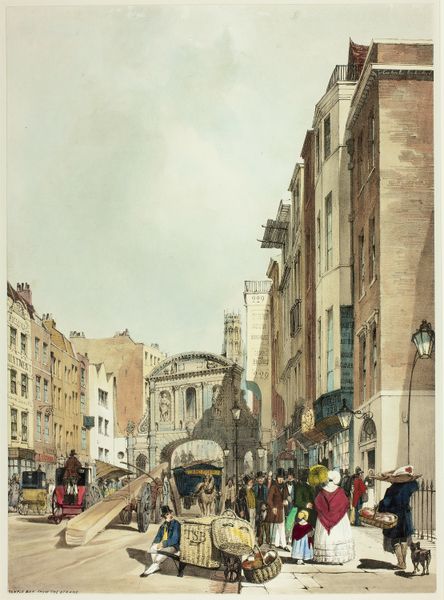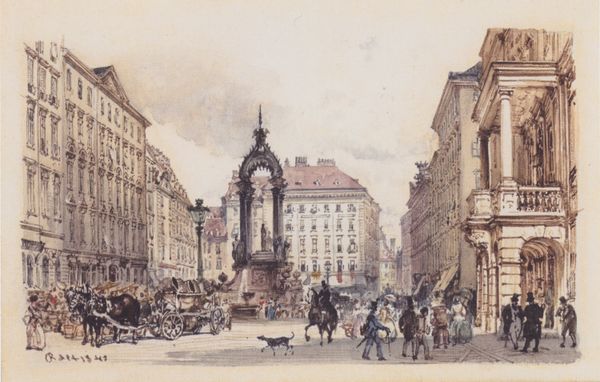
painting, plein-air, watercolor, architecture
#
painting
#
plein-air
#
watercolor
#
romanticism
#
cityscape
#
genre-painting
#
architecture
#
realism
Copyright: Public domain
Curator: What a remarkable study of light and shadow. Rudolf von Alt captured this view of the Holy Trinity Greek Church in Vienna using watercolor techniques. Editor: Yes, it strikes me as a really lovely, almost idealized urban scene, but tinged with an awareness of social divisions—everyone is out on display but seemingly going about their separate ways. It feels representative of 19th century class structures. Curator: Von Alt often found beauty in architectural subjects, didn’t he? There's such painstaking precision to all of the details that form the facades—the rows of windows, and the ornamentation—all evidence a keen understanding of form and proportion. One can sense his own reverential awe through his detailed and skilled transcription. Editor: Agreed. But even as the artist meticulously captures architectural details, I wonder about the cultural context of depicting religious architecture—and particularly Greek Orthodox Christian architecture—within the urban fabric of Vienna. It highlights both visibility and potential marginalization simultaneously. This positioning of minority representation against an idealized urban landscape tells a story. Curator: You're right to note that potential tension, the artist does offer a stage for examining that negotiation of place and identity. Editor: The cross atop the church acts as both a cultural symbol and an undeniable marker of presence in the city’s narrative, asserting an influence within the culture. Curator: It speaks to a specific identity carved into the very skyline—while those figures animate the city street. Consider the visual language implied—this city pulses with different peoples and concerns occupying shared spaces, but perhaps experiencing realities in contrasting ways. Editor: It is a dynamic moment in the ever-changing face of urban life. A picture both tranquil and brimming with untold histories of interaction and friction. Curator: Thank you for reminding me how much we read into visual iconography as traces of historical memory, informing a greater sense of communal meaning. Editor: And thank you, as always, for helping us observe how art enables us to interrogate the complexities of society across centuries.
Comments
No comments
Be the first to comment and join the conversation on the ultimate creative platform.
